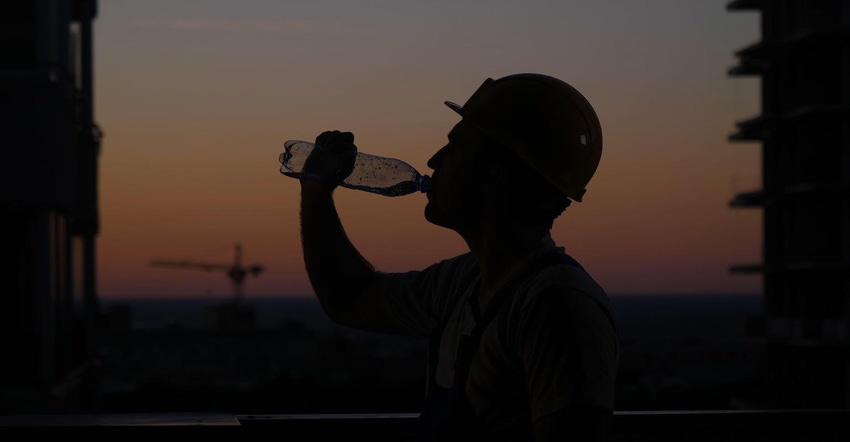OSHA’s Heat Illness Prevention Campaign educates employers on their responsibility to keep workers safe and ensures that workers understand their rights. Here are OSHA’s tips for navigating hot or humid working conditions.

The majority of workers who succumb to a heat-related illness are in their first week of work, according to data recently released by OSHA. When the temperatures spike, workers and managers should take precautions to prevent heat stroke.
An OSHA campaign is seeking to address heat-related illnesses on the job with a campaign that educates about employer responsibilities and general information for workers.
The campaign is putting employers in touch with resources like the heat-stress calculator, which allows employers to determine if a worker's heat stress will be above recommended limits.
Here are some simple steps you can take to protect yourself and your workers in challenging heat conditions:
1. Frequent breaks for new and returning construction workers
Frequent breaks and shorter shifts will allow new and returning workers to build greater tolerance to heat in their first days on the job.
2. Drink plenty of water
Concrete workers know that placing concrete in hot conditions presents its own set of challenges. Workers dealing with extreme heat conditions should drink lots of water to help prevent heat-related illnesses. The Department of Labor said workers should drink it often even if they are not thirsty.
3. Frequent cooling breaks
In addition to drinking water, providing frequent cooling breaks for all workers in extreme heat conditions is an important part of keeping your team safe. Taking these breaks in shaded or cool areas is a vital part of preserving the health of workers laboring in that heat.
4. Wear a hat and light-colored clothing
Hats should be worn in extreme heat conditions to protect workers from overexposure to the sun, and light-colored, breathable clothing should be worn to reduce the risk of heat-related illness, according to the Department of Labor. Light-colored clothing is more reflective of sunlight than dark-colored clothing and is, therefore, cooler to wear in hot conditions.
5. Monitor yourself and fellow workers
In extreme-heat conditions, remember to monitor yourself and your fellow workers for potential signs of heat-related illnesses often. Profuse sweating or dry skin can be signs of heat-related illnesses, according to the CDC. Heat stroke can lead to slurred speech, an altered mental status and a loss of consciousness. Those workers exhibiting signs of heat stroke should get immediate medical attention.
For more information, review a new National Emphasis Program by OSHA that aims to refresh workers with some heat safety tips to consider as the mercury rises.
About the Author(s)
You May Also Like




